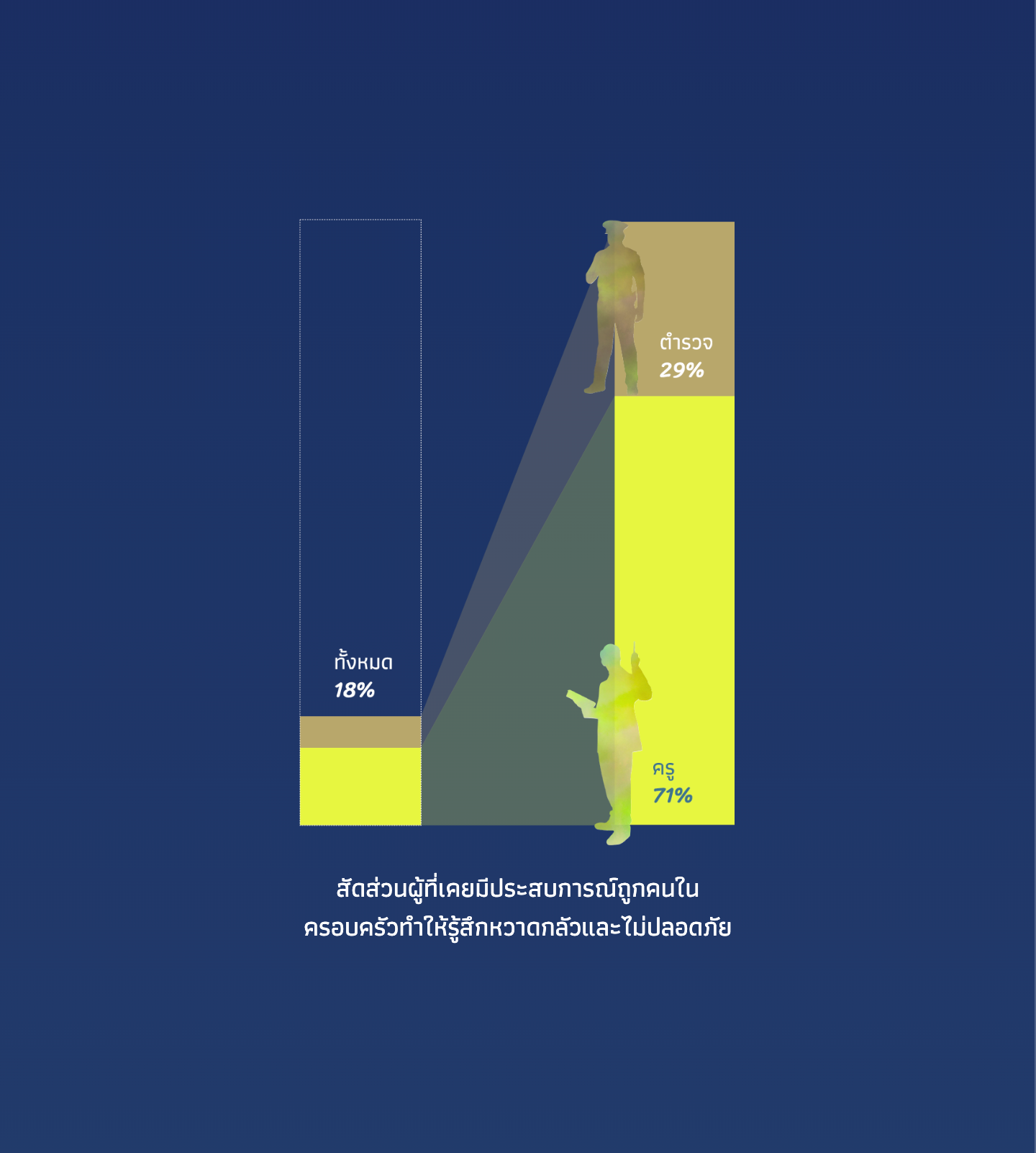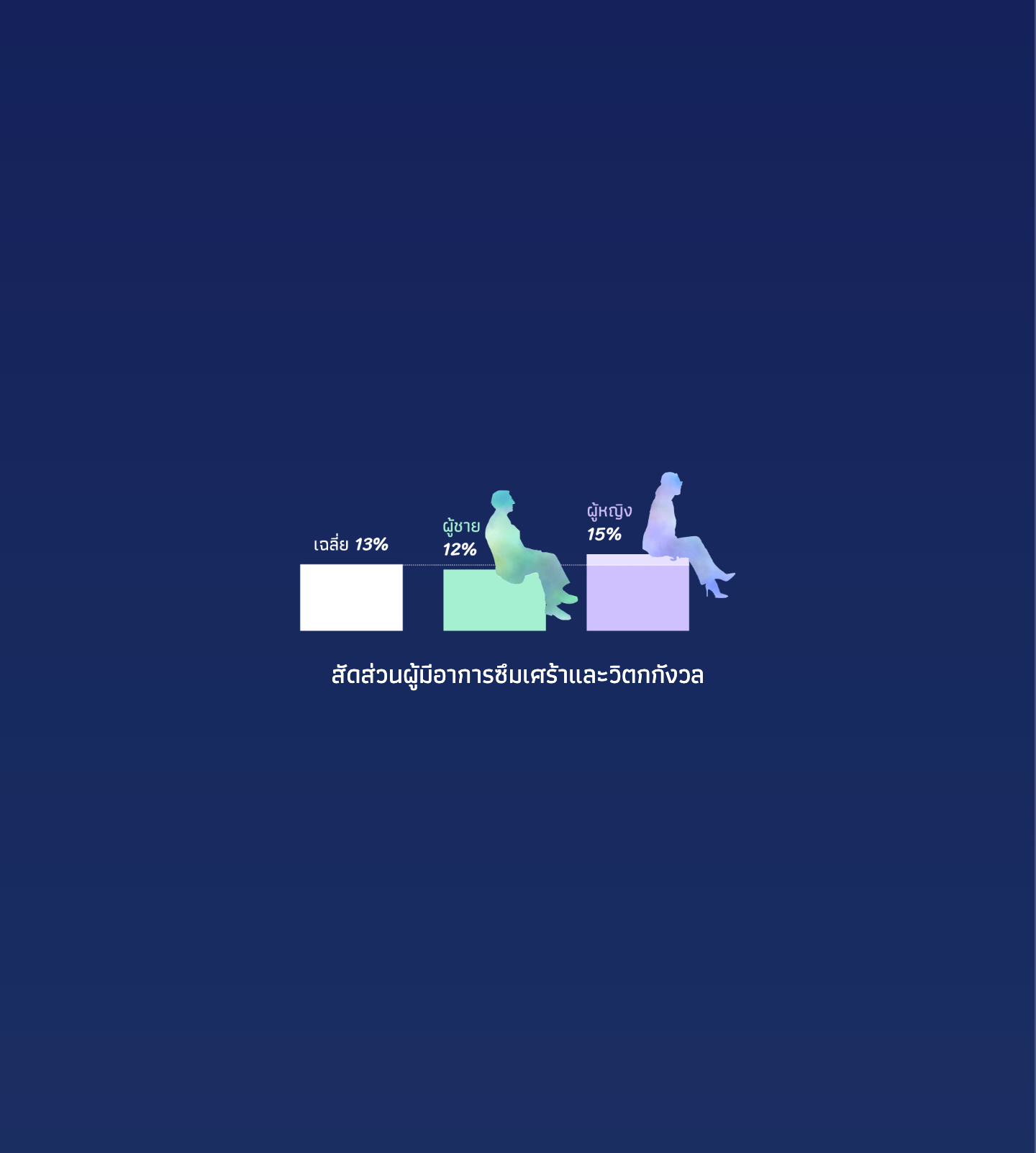Working with Punch Up team to analyze a survey of 3,166 Thai public sector officials, including police officers and teachers, to explore the relationship between mental health and work motivation. Investigating how these elements influence both their performance and interactions with the public. The client, the School of Public Policy at Chiangmai University, aims to extend this narrative to individuals in any organizational setting, promoting a mentally healthy workplace. Additionally, this project suggests mental well-being interventions aligned with the Sustainable Development Goals (SDGs).
The design of the website aims to represent the abstract visual of mental feelings through a variety of colors within the human shape and the use of chaotic lines. As the user scrolls through the website, the background color gradually becomes brighter, symbolizing the fading away of the darkness associated with mental health. In the data part, after analyzing it, we found that our assumption was incorrect. Contrary to our expectations, a high score in mental health actually correlated with a low score in work motivation. This made it challenging to choose a chart that effectively represented the story. Initially, a scatter plot seemed suitable for the data, but the distribution was too equal to highlight the necessary insights. Ultimately, I decided to use a simple bar chart that resembled a histogram, without a timeline, to compare mental health issues with work motivation, showing an increasing trend.
In the first part, a mini-quiz invited users to relate to the story by answering questions about their feelings in the workplace.


Some parts of the interview reflected their mental health at work
From the question "Do you want to dedicate yourself to a better society?", Most of symptomatic people answer "Yes"
Unfortunately, the chart confused some users, and certain aspects of the user interface were not clear to understand. This project taught me a valuable lesson about the importance of UX/UI. Despite client satisfaction and positive results from internal testing, real users and fresh eyes had difficulty comprehending certain messages we intended to convey. It became apparent that we may not have fully achieved our goal. Therefore, for future projects, I prioritized user testing, even for small micro-sites, and used feedback to improve my designs.